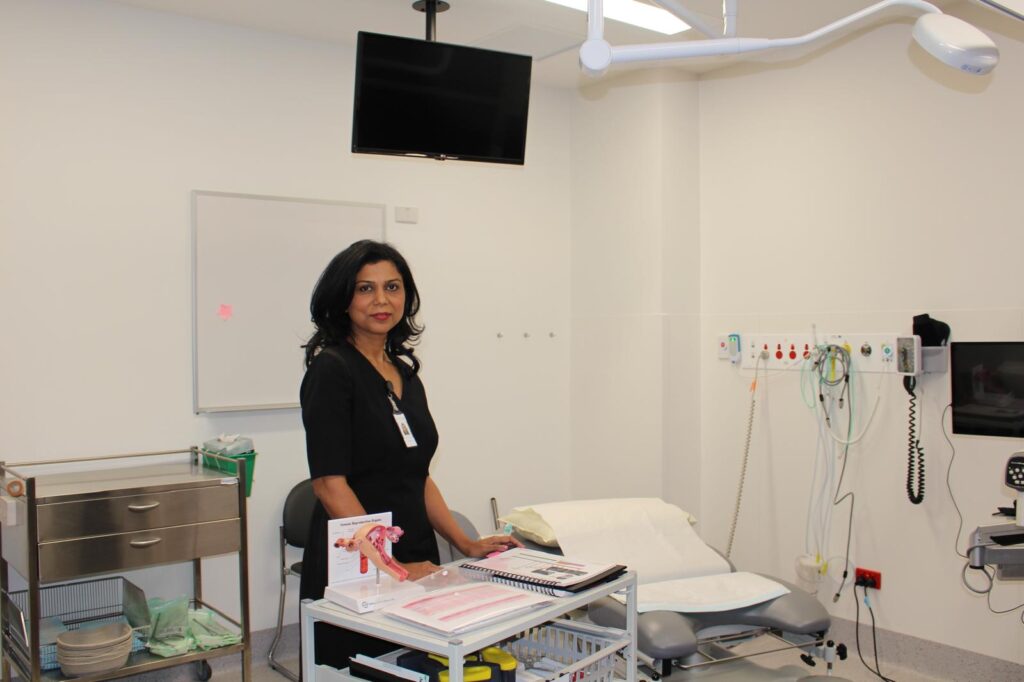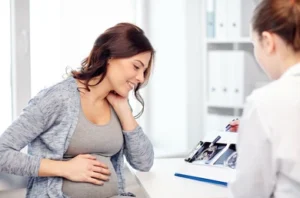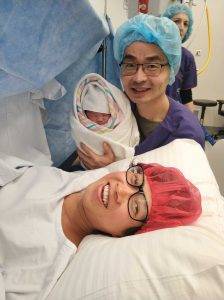
Fertility
Dr Samina offers a careful assessment, investigation, counselling and treatment to women with both primary and secondary infertility.
Dr Samina is a fellow of The Royal Australian and New Zealand College of Obstetricians and Gynaecologists, with a Masters of Reproductive Medicine.
Her practice covers all aspects of infertility with an interest in adolescent gynaecology, endometriosis, endocrine dysfunction, secondary infertility and fertility preservation.
If you are trying to get pregnant a pre-pregnancy consultation can optimise your reproductive health is encouraged in anyone considering becoming pregnant. Where women have a pre-existing condition such as PCOS or are above the age of 35, seeking review after six months is recommended to achieve the best outcomes.
Pre-Pregnancy Counselling
Pre-pregnancy counselling is a counselling session conducted before you conceive and is beneficial for the mother as well as the baby during the term of pregnancy. It helps in checking for possible risk factors during pregnancy and gives a way to resolve any medical issues you may have before you become pregnant. Pre-pregnancy counselling and care will help you to become physically healthy and emotionally strong before you enter the pregnancy phase.
During this session you can discuss all the things that concern you before you get pregnant, like starting prenatal vitamins, diet or any hereditary health issues.
Some of the topics you may discuss at a session are:
- Reproductive history, including:
- Prior pregnancies
- Menstrual history
- What types of birth control you’ve used
- Previous pap test results
- Any history of STDs or vaginal infections you have or have had
- Personal medical history, including any surgeries you’ve had
- Current medications, including vitamins and over-the-counter medications you take
- Family health history
- Your physical environment at home and at work
- Your weight
- Your lifestyle
- Exercise
- Diet
- Alcohol intake
- Caffeine intake
Any drugs you have used
currently use Prenatal vitamins
Dr Samina may also:
- Perform a physical exam to check your general health or a pelvic exam to check your reproductive health
- Order lab tests to check for certain health conditions
- Talk to you about how to determine when you’re ovulating and are most likely to get pregnant
- Discuss your vaccination status and talk about necessary or recommended vaccines
- Talk to you about genetic testing and its pros and cons
Fertility Preservation
Fertility preservation is the process of saving or storing eggs, sperm, embryos, or reproductive tissue so that a person can use them to have biological children in the future.
Among the various fertility preservation options, egg freezing is the most common and well known one.
If you are considering fertility preservation, talk to Dr Samina about what the best options are for you.
Fertility Treatment Protocol: Medications, Monitoring, and Timing
This protocol covers fertility medications, ultrasound monitoring, trigger injections, and timing of intercourse to optimize chances of conception. It also includes steps for pregnancy testing and next steps after ovulation

Trigger injection
Human Chorionic Gonadotrophin – Pregnyl® 5000IU Trigger injections cause ovulation to occur approximately 36 to 48 hours after administration. It is a one-off injection given in the same way as FSH injections. Some patients ‘surge’ spontaneously, (i.e., begin ovulating) so do not need this injection.
Trigger Injection
Dr Samina will advise you on what date it should be administered. The trigger injection can be given in the clinic by a nurse or self-administered at home. The timing is not crucial so can be given at any time of the day. It is important to have regular intercourse once ovulation has been triggered.

Timing of intercourse
The ideal time for intercourse is before and up to the time of ovulation. You may start having intercourse any time after the first scan unless multiple follicles are identified. Once a large follicle (>16mm) is identified you should have frequent intercourse (every day if possible).
Timing of intercourse
The ideal time for intercourse is before and up to the time of ovulation. You may start having intercourse any time after the first scan unless multiple follicles are identified. Once a large follicle (>16mm) is identified you should have frequent intercourse (every day if possible).
Common medication side effects
- Headache
- Depression
- Hot flushes
- Temporary visual disturbances like blurring and yellow discolouration
- Multiple Pregnancy
- Nausea
- Vomiting
- Weight gain
- Shortness of breath
- Diarrhoea
- Painful breasts
- Bloating
- Mild stomach pain
- Hot flushes
- Joint pain
- Fatigue
- Nausea
- Multiple Pregnancy

Ovulation Induction
Ovulation Induction is a form of Assisted Reproductive Technology (ART) and involves taking medication to improve ovulation and is usually the first-line fertility treatment.
Ovulation induction uses hormonal therapy to stimulate egg development and release, or ovulation. Historically, these medications were designed to induce ovulation in women who did not ovulate on their own — typically women with irregular menstrual cycles. The goal was to produce a single, healthy egg.
Some of these medications are available in pill form and block estrogen receptors, making the body think estrogen levels are low. This stimulates the release of a hormone called Follicle Stimulating Hormone (FSH) from the brain, leading to ovulation (the release of one egg) or sometimes superovulation, meaning that more than one egg is released. The more eggs produced in a cycle, the greater the chance of conception. Careful monitoring with ultrasounds during the process increases the chance of success while also minimizing the risk of twins and more than twins. For some women who are resistant to ovulation induction with pills, more aggressive medications, such as Follicle Stimulating Hormone in the form of once-daily injections, can be used with careful monitoring.
Quick Contacts
- 1300 523 937
- contact@drsamina.com.au
- 03 8526 8965
- St Vincent’s Private Hospital
- The Clinic Footscray
- All Rights Are Reserved 2025
- Developed By Jassra Naeem











